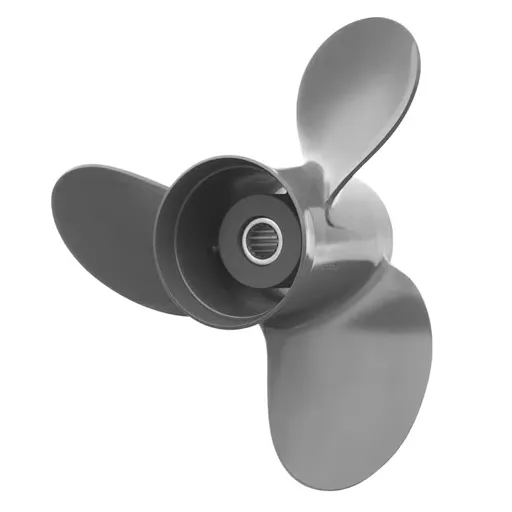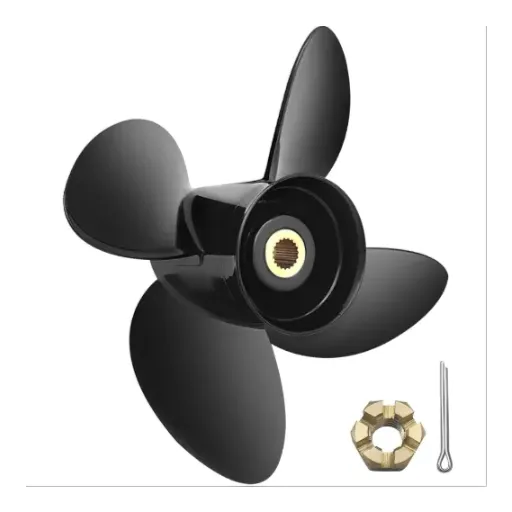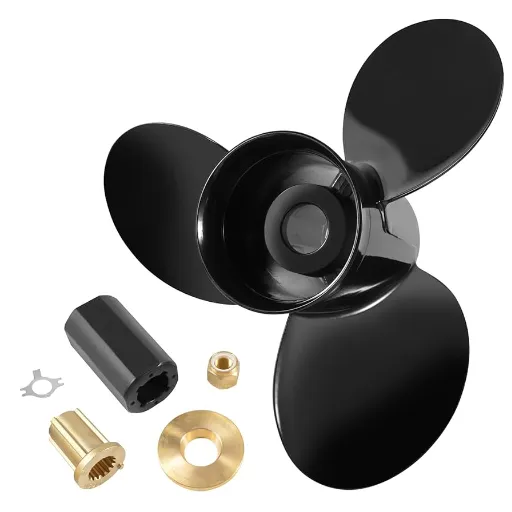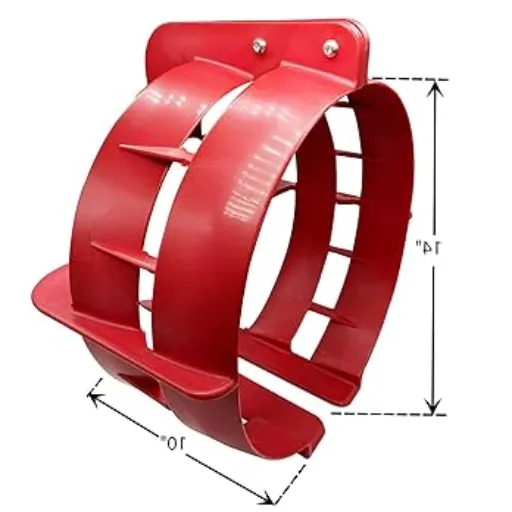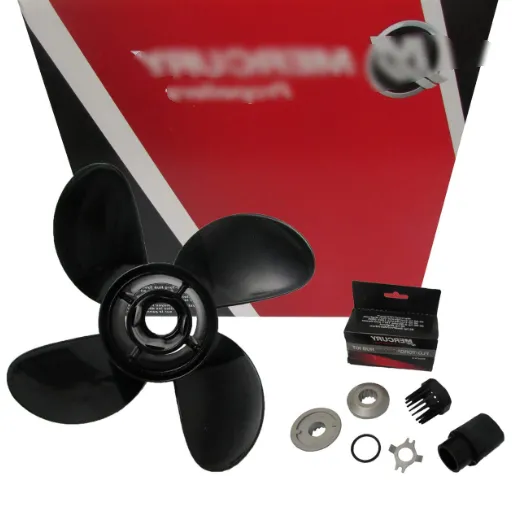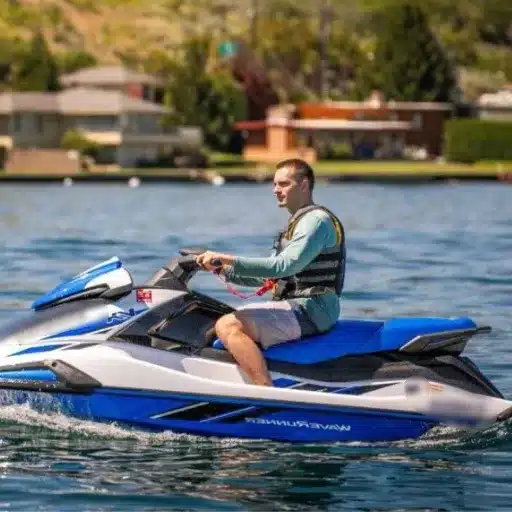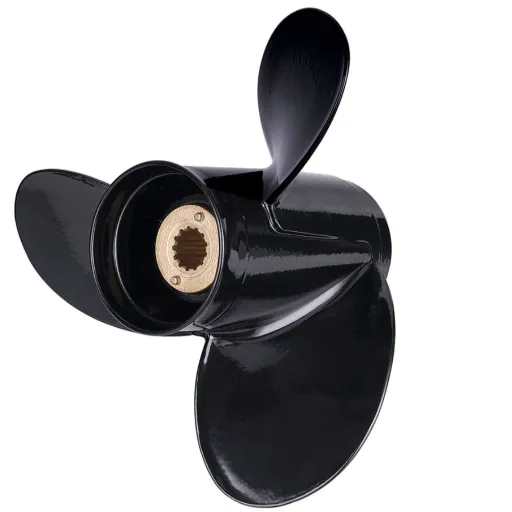Selecting the ideal propeller for your Honda outboard engine is a major consideration affecting the performance of your boat and its fuel efficiency. These factors also affect some precautions in terms of longevity. Boat owners are presented with innovative designs to cater to every marine need with the 2025 lineup of Honda outboard propellers. The article serves as your complete guide breaking down important factors to be considered in propeller selection to optimize your boating experience. From that point, be it for maximum speed, smooth acceleration, or maximum fuel economy, you will be equipped with knowledge on making the right choice to help you maximize the fruition of your Honda outboard setup.
Understanding Honda Outboard Propellers
Introduction to Honda Outboard Propellers
Honda outboard propellers form a vital class of components meant to efficiently transfer the engine power unto the water, thereby moving your boat. The motive behind these propellers is to complement Honda outboard motors so as to achieve compatibility and ultimate performance. Each propeller undergoes detailed construction considerations to strike a balance amongst speed, thrust, and fuel consumption, while being strong enough to stand different marine situations.
There are a few basic elements to consider in the purchase of a Honda outboard propeller. These include the diameter and pitch of the propeller, the number of blades, and the kind of material with which it is made. Diameter stands for the complete width of the propeller’s circle of motion, while pitch denotes the distance the propeller would move forward in one full rotation. The number of blades influences performance with respect to acceleration and/or control, whereas materials like aluminum or stainless steel have billets of difference in strength, cost, and resistance to corrosion. It is therefore very important that one knows about these specifications when plotting for a type of performance in accordance with their boating needs.
Honda offers the widest range of propellers to suit virtually every type of application, from pleasure craft to fishing boats and water sports. They are equipped with propellers that possess anti-ventilation features, further durability properties, and less maintenance requirements. Proper choice of a propeller will not only smooth the ride of your vessel but also extend the life of your Honda outboard motor by minimizing unnecessary strain on the engine. In the name of innovation and quality, these propellers from Honda are assured to bring home top-notch marine performance.
Importance of Selecting the Right Propeller
Choosing the right prop is paramount to maximizing your boat’s performance and fuel efficiency. A prop that is designed right ensures that the engine operates in the recommended RPM range, thereby generating uniform power output and saving fuel. This not of course upholds the actual boating experience but also reduces the operating cost with time, which is of utmost importance for a boat owner.
An improperly sized propeller puts extra strain on the outboard engine. Excessive load will cause the engine to overheat, thereby consuming more fuel and service; wear will be further accelerated. Thus, a propeller properly matched to the engine’s horsepower and purpose (be it cruising, fishing, or watersports) will greatly improve engine life and dependability.
Similarly, a propeller can be adjusted for various boating conditions like different water depths, speeds, and loads. Realizing the desired performance calls for selecting pitch, diameter, and materials for the propeller. For instance, aluminum propellers offer lightness and economical value, while stainless steel is made for extra strength and damage resistance. Attending to all these considerations will guarantee the boat be ready for dual environments.
Overview of Propeller Options Available
When selecting a propeller for your boat, several key options come into play, each tailored for a particular setting in terms of performance needs and operating conditions. Among the primary types of propellers are aluminum, stainless steel, and composite, with their own sets of pros and cons depending on their basic composition and engineering.
Aluminum Propellers
Aluminum propellers rank among the types more often encountered for their cheapness and lightness. They can be considered in casual boating or applications where price takes priority. Aluminum, however, is susceptible to damage from impacts or debris in the water, suggesting lesser durability.
Stainless Steel Propellers
Stainless steel propellers are extremely durable and wear-resistant, making them apt for demanding and high-performance situations. The rigid construction of these propellers renders maximum efficiency and thrust through minimizing the level of flex action interfering with their operation due to any of its effects. Although stainless steel propellers are more expensive, their longevity and performance benefits often justify the initial investment.
Composite Propellers
Composite models are manufactured by using lightweight synthetic materials combined for durability and flexibility. Usually, these propellers are a low-maintenance item, corrosion resistant, and often quite a bargain. They can also fill a great need of being used in freshwater environments where the risks of impacts are minimal. Composite propellers, which can never compete with stainless steel in their level of performance, are a very good choice for every-day applications.
By knowing the strengths and weaknesses of each type, a boat owner can select a prop that meets his performance requirements, operating conditions, and budget.
Types of Honda Propellers
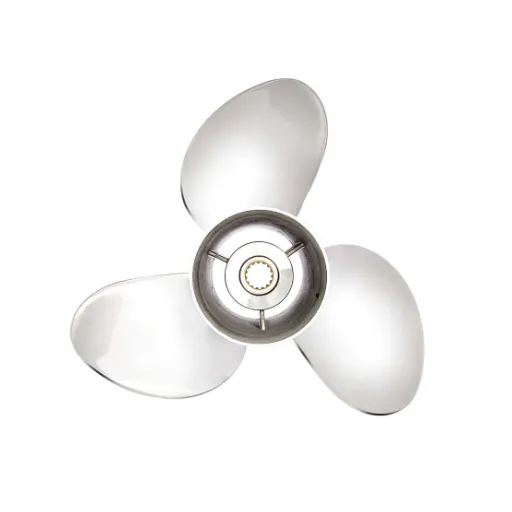
3 Blade vs. 4 Blade Propellers
Propellers with three blades tend to yield greater maximum speed and efficiency, whereas four blades provide greater stability, lesser vibrations, and better low-speed performance.
| Key Point | 3-Blade | 4-Blade |
|---|---|---|
| Top Speed | Higher | Lower |
| Efficiency | Better | Slightly lower |
| Vibration | More | Less |
| Stability | Moderate | Higher |
| Low-Speed | Moderate | Better |
| Drag | Less | More |
| Horsepower | Lower | Higher |
| Common Use | Recreational boats | Larger, heavier boats |
| Cost | Lower | Higher |
| Availability | More | Less |
Aluminum vs. Stainless Steel Propellers
Aluminum propellers are inexpensive and lightweight but do not last as long as their counterparts. Stainless steel propellers offer greater performance, durability, and efficiency but come at a higher price.
| Key Point | Aluminum | Stainless Steel |
|---|---|---|
| Cost | Lower | Higher |
| Durability | Lower | Higher |
| Performance | Moderate | Superior |
| Weight | Lighter | Heavier |
| Corrosion | Prone | Resistant |
| Flexibility | More | Less |
| Top Speed | Lower | Higher |
| Repair Ease | Easier | Harder |
| Common Use | Recreational boats | High-performance boats |
| Impact Tolerance | Dents/Bends | Resists minor impacts |
Understanding Propeller Diameter and Pitch
All types of diameters and pitches are important in determining the efficiency of the propelling system of the boat. The diameter of a propeller is the total distance across the circle cut by the rotating blades. Larger diameters, therefore, produce greater thrust and are suitable for heavier boats and vessels requiring greater power for propulsion. Conversely, smaller ones are more suitable for lighter boats, where greater responsiveness and speed are essential.
Because pitch is the distance that a propeller, in theory, should move forward for one full rotation without slip, which in reality it does not, propellers with greater pitch give more forward movement for each revolution and are suited for high speed. Propellers with less pitch give better acceleration and are useful when more pulling power is required, such as in towing, or when running in rough waters.
Diameter and pitch, together, should be optimized based on engine horsepower, boat weight, and water conditions as well as purpose. Proper choice achieves an engine running at the recommended level of RPM for good fuel economy and better performance. Propellers with a very low pitch tend to make the engines over-rev, while those with too much pitch may bog the engine and reduce efficiency.
In modern days, using computer-aided tools and charts for matching the boat specifications to the needed propeller diameter and pitch is quite common among boat owners. Such tools become handy in ensuring the best choice, balancing speed, efficiency, and durability.
Performance Factors of Honda Outboard Propellers
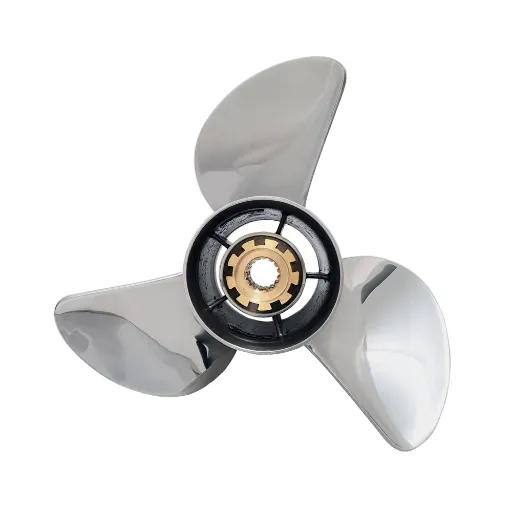
How Blade Design Affects Performance
The type and design of the blades of a Honda outboard propeller affects the performance of a boat in terms of its speed, fuel economy, and maneuverability. In other words, the specifications of the blades-their number, design, and surface area-determine how well the propeller can put engine power into thrust. For instance, a three-blade propeller is known to be an all-round choice in terms of speed and efficiency; still, in contrast, a four-blade propeller will better handle the boat and provide better thrust at lower speeds, which is especially useful during towing or in rough water.
Surface area is another consideration from a performance-induced standpoint. The larger the surface area, the greater the thrust it can muster, which helps in heavy-load situations but conversely cuts down on its maximum speed. Narrow profile blades will surely reduce drag and increase velocity in situations requiring low thrust. Rake angle-a measure of how much a blade leans backward-also influences lift characteristics of the boat. Large rake angle imparts much lift, which is favorable on boats operating at high speed, whereas small rake angle is suited to boats requiring consistent thrust under variable conditions.
Recent hydrodynamic considerations lead to even more subtle modifications, exemplified by cupping. Cupping means tiny curving at the blade’s tip and trailing edge to prevent cavitation and slippage, thereby increasing fuel economy and acceleration. In other words, an efficiently chosen blade design-to-user need and engine characteristics-would lead to better performance optimized for different operational scenarios.
Choosing the Right Pitch for Your HP
The prop pitch is designed for the target HP, so I try to tie the prop-dependent aspect to the performance demands of the vessel and the engine’s optimum operating range. Pitch describes how far a propeller would theoretically move forward in one rotation. Pitch directly influences acceleration, speed, and engine load. In general, a propeller with a larger pitch is capable of providing higher top speeds while straining the engine if the load exceeds its capacity. A smaller pitch cogently trades-off top speed for faster acceleration while carrying heavier loads without strain.
First, I make sure the engine is running at the recommended RPM values at wide-open throttle (WOT) since an RPM outside the recommended range will cause excess fuel consumption or wear on the engine. For example, if the engine can reach a very high RPM at wide-open throttle, I will consider a higher-pitch propeller to cause more resistance and thus reduce the engine’s high RPM. On the contrary, if the engine cannot reach its ideal RPM at WOT, I would choose a propeller with a lower pitch to reduce load and improve engine performance.
I then factor in the purpose behind which the vessel will be used, as they are not in agreement with the pitch needed for the intended application. For boats towing wakeboarders on a recreational basis, a lower pitch may actually provide the rapid acceleration needed. Whereas, for extended cruising or fast activeness, a higher pitch may allow for enhanced efficiency and speed. Matching the pitch of the propeller to the engine’s characteristics and the operational conditions allows me to improve efficiency, preserve engine life, and enhance the performance for any set of conditions intended for.
Maximizing Efficiency with the Right Prop Configuration
The choice of the perfect propeller arrangement necessitates a thorough understanding of hydrodynamics, engine output, and practical use cases. Recent advancements in CFD modeling have allowed the design of propellers with an uncanny degree of engineering precision. Present-day propeller performance evaluation extends past the typical criteria of diameter and pitch to begin simulation of cavitation patterns, blade geometry, and material constitution, and further study how these parameters behave under differing simulated real-world operating conditions.
The data, in fact, confirms that the incorporation of progressive pitch designs increases thrust efficiency while simultaneously reducing the level of vibrations, thus ensuring a smooth operation and enhanced life span of the propulsion system. On another front, technological developments contributed by newer-generation alloys and composite materials have rendered propellers more durable and lightweight, on the other, feeding back into fuel efficiency.
An operator who merges the latest industrial science with an appropriate prop configuration should harness precise output optimization for certain circumstances. This not only avoids the inefficiencies commonly thrown in the limelight during phase-based systems but is also environmentally compliant, optimizes fuel consumption, and helps in the overall maximization of the marine engine’s life.
Innovations in Honda Outboard Propellers for 2025
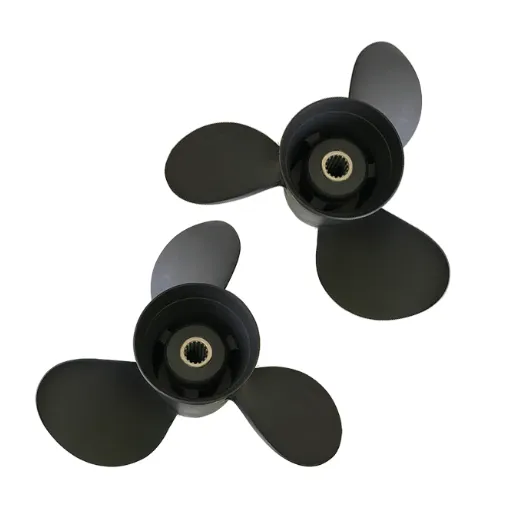
Introduction of Sharrow Propellers
Sharrow propellers represent a revolutionary innovation in marine propulsion, striving to achieve efficiency, noise suppression, and overall performance enhancement in outboard engines. Contrary to conventionally designed propellers, Sharrow propellers have a distinctive looped blade geometry-the blade tip drag and turbulence that usually occur. This patented design also enhances water flow around the propeller, significantly diminishing cavitation and vibrations in operation.
According to performance data obtained from recent studies, fuel economy can be boosted up to 15-20% when using Sharrow propellers as compared to standard ones. The design of these propellers also helps in cutting down levels of noise emission, with a reported drop of around 10 decibels-in certain cases. Such fine-tuning of noise levels serves to meet the ever-evolving environmental requirements and also to reduce operator fatigue with passenger comfort.
The 2025 series of the propellers would be geared for compatibility with the newest generation of Honda outboard motor ranges, going further into the use of new-age materials and manufacturing techniques for best durability and reduction of maintenance in general. From the standpoint of finesse, Sharrow propellers are argued to bring in new standards for performance and sustainability in the industry.
Electric Propulsion Compatibility
The incorporation of Sharrow propellers into electric propulsion systems appears to signify one of the promising directions for marine technology. Electric outboard motors need efficiency and precision energy management to gain a longer operating range and higher performance overall. The innovative blade geometry and low drag of Sharrow propellers render them well-fitted for this purpose. It is expected from experimental evidence that the propellers may increase the thrust-to-power ratio by a notable margin concerning electric engines, leading to reduced energy use and more extended battery life. This benefit is particularly precious, as the focus on sustainability and the decreasing environmental footprint grow more intense.
Maintaining reasonably consistent performance in the wide scope of varying load conditions poses the single most significant challenge for electric propulsion. The propellers meet this challenge by delivering a more even distribution of thrust as water resistance changes; also, they keep this balanced thrust as vessel speed varies. By minimizing the turbulence, propulsion efficiency is enhanced, and motor load is reduced, thus extending motor life. Independent tests proved by recent findings that the system thus optimized improves propulsive efficiency by more than 30% when coupled with an electric motor, setting a new bar for the marine sector.
Moreover, there is a high-level application for Sharrow propellers in hybrid propulsion systems due to their flexibility. They tailor design parameters, such as blade sweep and pitch, for diverse motor sizes and power ratings, including high-torque electric systems. This versatility places Sharrow firmly at the cutting edge of electric propulsion innovation, enhancing both performance and the acceptance of green technologies. With regulatory bodies around the world mandating reductions in carbon emissions, the synergy offered by Sharrow propellers and electric propulsion systems stands as a major stride toward sustainable marine transport.
Benefits of Anti-Fouling Coatings
Optimization of performance, efficiency, and value of marine vessels must have anti-fouling coatings on the surface. These coatings contaminate the hull of the ship underwater, inhibiting the growth of marine organisms such as algae, barnacles, and mussels. A number of advantages are provided by the presence of these coatings:
Fuel Economy
In order to gain more fuel efficiency, anti-fouling coatings create less drag on the hull by reducing fouling. It has been established through research that the fuel consumption is increased by around 10% to 15% when the hulls are fouled even to a minimum extent, while an anti-fouling coating reduces such effects and contributes to cost savings and less environmental pollution.
Increase in Vessel Speed and Performance
Thrust resistance is first created by the hull fouling and during vessel movement, resulting in increased speed and maneuverability. This increased performance is a highly valued requirement for commercial shipping fleets and high-speed vessels.
Corrosion Prevention
Anti-fouling coatings can also be formulated to give corrosion resistance property to protect the hull material against degradation by seawater during exposure. Also, it gives good corrosion resistance, maintaining the structural integrity of marine assets and extending their service life.
Lowering the Cost of Maintenance
Cleaning and maintenance can be quite laborious when it comes to severe hull fouling. Anti-fouling coatings greatly minimize the number of times maintenance is necessary, thereby reducing operational costs.
Environmental Compliance
The majority of anti-fouling coatings comply with stringent environmental regulations. These coatings offer an environmentally friendly solution to reduce the dispersal of invasive alien marine species and the new ones formulated without hazardous biocide so as to protect marine resources sustainably while complying with international regulations like IMO’s Ballast Water Management Convention.
In serving these important purposes, anti-fouling coatings play a very important role in promoting efficient, sustainable, and cost-effective marine operations.
Maintenance Tips for Honda Outboard Propellers
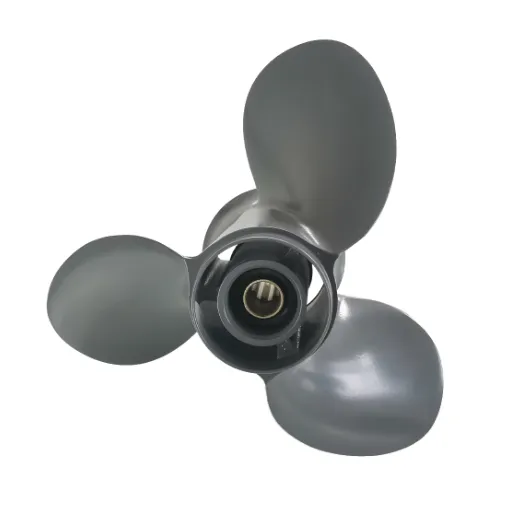
Regular Inspection and Cleaning
Maintenance, inspection, and proper cleaning of Honda outboard propellers are necessary for the best working condition and the longer operational life of the propeller. Any dents, even the smallest, are enough to disrupt the hydrodynamics of the vessel, thereby reducing fuel efficiency and handling properties. Consider, therefore, a routine inspection of the propeller to identify wear, corrosion, or deformation caused by wire abrasions, or hitting, accidentally, a submerged object. Look, even for slight cracks along the blades or some warping which may be hardly observable but, if present, really hampers the efficiency of propulsion.
Clean the propellers thoroughly since barnacles, algae, and other forms of biofouling may build up on the propeller over a period. Drag is generated due to such formations, thus limiting propulsion power and sometimes unnecessarily stressing the engine system. Use a soft-bristle brush and some mild cleaning solutions to remove any buildup without damaging the protective coating, if any. If the fouling is tough to eliminate, environmentally-friendly products such as biocide-free cleaners may be used to ensure no damage to the environment occurs.
Checking the propeller’s fastening elements regularly is a good idea; cotter pins and thrust washers should be assessed for the possibility of loosening or corrosion. Ensure that all components are properly seated and securely fastened. The slightest fact of having a loose or improperly seated propeller can cause vibrations, loud noises, or even an accidental dislodgement in running conditions. Keeping an up-to-date record of inspections or cleaning processes will also enable boat owners to check for patterns and to address issues they may see occurring more than once, thus ensuring smooth-running marine operations and significantly cutting long-term costs.
Repairing vs. Replacing Your Propeller
A Propeller repair is cost effective for minor damage while replacement is essential for severe damage or performance upgrades.
| Key Point | Repair | Replace |
|---|---|---|
| Cost | Lower | Higher |
| Damage Level | Minor | Severe |
| Performance | Restores | Upgrades |
| Durability | Limited | Long-term |
| Time | Faster | Slower |
| Material | Aluminum preferred | Any |
| Lifespan | Shorter | Longer |
| Use Case | Temporary fix | Permanent solution |
| Eco Impact | Sustainable | Wasteful |
| Complexity | Easier | More complex |
Storage Tips to Prolong Propeller Life
Proper storage of the propeller will prolong its lifespan and maintain its performance. The following are detailed guidelines to help you keep the storage conditions in top shape:
- Cleaning Before Storage: Remove dirt, grease, and marine growth from the propeller by employing a non-corrosive cleaning solution and a soft brush. It is very important to dry the propeller so that corrosion by moisture will not take place during storage.
- Inspection for Damage: Carry out a detailed examination to establish the presence of cracks, bends, or abnormal wear patterns. Minor damage should be repaired immediately to prevent its worsening during storage. If it is major, replacement is necessary.
- Protective Coatings: Treat propellers with a corrosion inhibitor or marine-grade grease. This protective layer shields moisture and oxidation, especially in high-humidity areas.
- Store in a Controlled Environment: Keep the propeller in cool, dry conditions with a limited exposure to sunlight and with extremes in dominant in temperature. The long exposure to UV radiation and fluctuating temperatures may weaken the material structure.
- Keep it Stable: Store the propeller on a sturdy, padded surface or inside a specialized storage case. Avoid placing any heavy objects on it or leant against it to keep accidental deformation from happening.
- Keep Away from Chemicals: Do not store the propeller near harsh chemicals or solvents that can destroy materials like aluminum or composite coatings.
Spending time in proper storage can help save potential replacement costs of the propeller and keep it performing well mechanically to re-install reliably.
References
-
University of Arizona Repository: Discusses motorboat propulsion systems, including Honda Marine lower units and prop shaft designs.
-
MIT DSpace: Covers advanced propeller design and propulsion systems, referencing Honda generators in the context of marine applications.
-
Michigan State University Law Archive: Includes discussions on product safety and liability involving outboard engine propellers.
Frequently Asked Questions (FAQ)
Q: What are Honda outboard propellers?
A: Honda outboard propellers are specially designed components that have been installed onto Honda outboards to improve their working efficiency on water. These boat props are offered in an assortment of designs, some of which include the classic 3 blade aluminum and stainless steel options, providing engines with maximum thrust and dependable functioning.
Q: How do I choose the right Honda outboard propeller?
A: The selection of a certain outboard Honda driving propeller depends on the size of your boat, the kind of water on which you will be driving, and whether you desire acceleration or top speed. Please take into consideration matching the propeller with the specs of a Honda marine engine in order to have the best performance.
Q: What material are Honda outboard propellers made from?
A: Honda outboard propellers typically are made out of aluminum or stainless steel. Here, the 3-blade aluminum propellers are lightweight and cheap, while the 3-blade stainless steel propellers, being heavier, offer greater durability and efficiency and are suitable for higher-performance applications.
Q: How do I maintain my Honda outboard propeller?
A: Regularly inspect your Honda outboard propeller for damage or wear, such as dents or corrosion. Cleaning the propeller and removing any debris will increase its performance. Lastly, check the condition of the hub system and replace any worn parts to increase the longevity of the propeller.
Q: What is the different between a 3-blade and a 4-blade propeller?
A: The major difference between a 3-blade and a 4-blade propeller lies in the number of blades. The 3 blade propeller generally excels in top speed and acceleration; however, the 4-blade propeller offers excellent acceleration and handling at lower speeds. Depending on your requirements, either could work for your Honda outboard.
Q: Can I put up a Solas or Michigan Wheel Propeller on my Honda outboard?
A: Yes, if Solas and Michigan Wheel propellers fit the specifications of your own model, then they will go for use on your Honda outboard. It is best to ensure that the propeller is for the correct hub system and pin drive configuration so that it fits well and performs as expected.
Q: What is the purpose of the XHS hub system in Honda outboard propellers?
A: The XHS hub system aims at making a reliable connection from the propeller to the outboard motor. Because of this system, propellers can be changed quite easily, and from the point of view of propeller operation, it diminishes vibration and thrust efficiency.
Q: How does mass and number of blades affect propeller performance?
A: The mass and number of blades on a propeller can significantly alter its behavior. More blades generally mean more thrust and acceleration – in this respect, they would suit heavier kinds of craft or crafts that require extra thrust. Conversely, a propeller with fewer blades puts an increased emphasis on top speed and lesser drag, which is where light-weight boats would stand to gain most.
Q: What is the benefit of using a high-performance prop for Honda outboards?
A: High-performance propellers like those from Titan or Saturn are engineered to optimize acceleration, top speed, and fuel efficiency. These props increase the handling and response of your Honda outboard and are therefore suitable for boaters looking for the best performance on the water.
Conclusion
Selecting the right Honda outboard propeller is crucial for maximizing your boat’s performance, fuel efficiency, and engine longevity. By understanding the various types, materials, and design factors discussed in this guide, you can make an informed decision that perfectly matches your boating needs and conditions. Remember to consider regular maintenance and proper storage to ensure your propeller investment serves you well for years to come.




